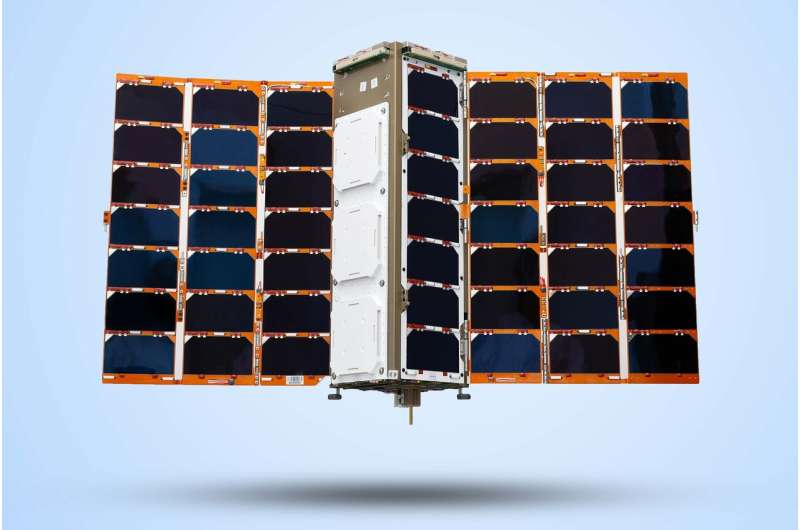Machine-learning nanosats to inform global trade

The latest batch of tiny satellites to monitor trade on Earth from space have launched.
The Glaswegian-built nanosatellites join a fleet of about 100 objects in low Earth orbit that help to predict the movement of the world's resources, so that businesses and governments can make informed decisions.
The two machine-learning capable satellites were launched on a Russian Soyuz launcher, alongside two further satellites that will be used to forger inter-satellite links. These connections allow satellites to act as relays, sending data to one another and down to ground stations, which cuts the time between data collection and its delivery to customers.
Despite the coronavirus pandemic, work has progressed with full support from ESA, which has extended exceptional support to small and medium-sized enterprises working in the space industry.
The satellites have been built by Spire Global UK, a satellite-powered data company that provides predictive analysis for global shipping, aviation and weather forecasting.
These services have been developed thanks to the UK Space Agency under the ESA Pioneer Partnership Project.
Spire uses automatic identification systems aboard ships to track their whereabouts on the oceans. Its network picks up the identity, position, course and speed of each vessel.
Thanks to embarked intelligent machine-learning algorithms, it can predict vessel locations and the ship's estimated time of arrival at port, enabling port authorities to manage busy docks safely and market traders to price the goods carried aboard.
Spire staff design and build all the sub-systems, and integrate and test the whole spacecraft in the company's Glasgow headquarters.
"Spire is all about helping our customers know what is next, so they can make better decisions. This month we are moving this forward by launching a true super-computer into orbit—1-2 teraflops!—so that we can analyze data right in orbit, using smart algorithms and machine learning," said Peter Platzer, chief executive and co-founder of Spire Global.
"This will allow us to get better, smarter and faster analytics to our customers for their business decisions."
UK Science Minister Amanda Solloway said: "While nanosatellites are just the size of a shoe box, they have the power and intelligence of a regular satellite and are driving a revolution in how we observe our planet. Backed by £10m of UK government funding, these extraordinary nanosatellites will not only help predict global trade and make businesses more cost effective, but will ensure the UK remains at the forefront of satellite development."
Elodie Viau, Director of Telecommunications and Integrated Applications at ESA, said: "These are yet another example of innovative systems and services provided by Spire under the ESA Pioneer program that maximizes benefits to industry thanks to an efficient co-management approach tailored to commercial best practices."
The satellites have been developed under an ESA Pioneer program, which is a Partnership Project co-funded by the UK Space Agency. The UK remains a leading member of ESA.
ESA's Partnership Projects are aimed at de-risking partners' investments, answering market needs. They are part of ESA's program of Advanced Research in Telecommunication Systems (ARTES).
Pioneer supports the emergence of commercial European entities with the ability to offer fast and affordable access to space to public and private customers in the field of satellite telecommunications.
The program creates new opportunities for both established and new players in the fast-changing and competitive satellite communications market.
Provided by European Space Agency





















